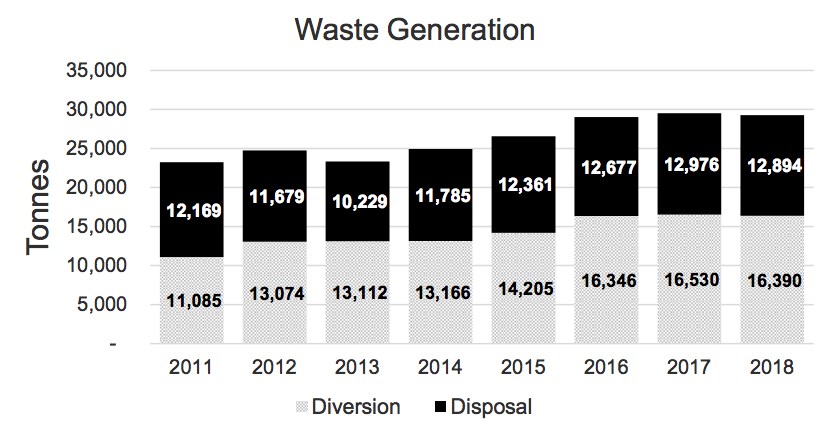As directors wrestle with what to do about the impending landfill closure, statistics are showing people on the Sunshine Coast keep generating more garbage.
Staff reported an “increasing trend in disposal, diversion and waste generation from 2014 to 2017,” noting that a “slight decrease” did occur in 2018.
An annual update on waste diversion and disposal presented at a May 16 Sunshine Coast Regional District (SCRD) infrastructure committee meeting found that less household garbage and less food waste is going to the landfill because of the municipalities’ combined organic and green waste collection services.
But those efforts are still not enough to hit the targets set in the SCRD’s solid waste management plan. The 2011 targets include a diversion rate of up to 69 per cent and per capita waste accumulation of 279 kilograms annually.
The diversion rate has remained steady at 56 per cent over the past three years, and the 2018 per capita disposal was 403 kilograms, the first drop after five years of increases.
Garbage from households via curbside collection and businesses make up the largest portions of landfill waste, followed by durable goods, such as furniture, and construction waste.
“It’s alarming to me that from 2011 to 2018, we’re wasting more and more and more. We’re throwing more out into the landfill,” said Halfmoon Bay director and chair Lori Pratt.
“We can’t continue to do this,” she said, adding that more buy-in from the community is needed, as are other diversion options.
Meanwhile, the SCRD has fallen behind on its organics diversion strategy. A January 2018 update put the timeline for banning commercial food waste at 2018, followed by a residential ban in 2020. Now, both commercial food and residential food waste bans are expected in 2020.
The SCRD is taking steps to move ahead with the curbside pickup of food waste, which forms part of its organics diversion strategy. Once implemented, combined with similar programs by Sechelt and Gibsons, staff expect the landfill’s life could be extended by up to a year.
At status quo diversion and garbage disposal services, the landfill is expected to reach capacity by 2025.



